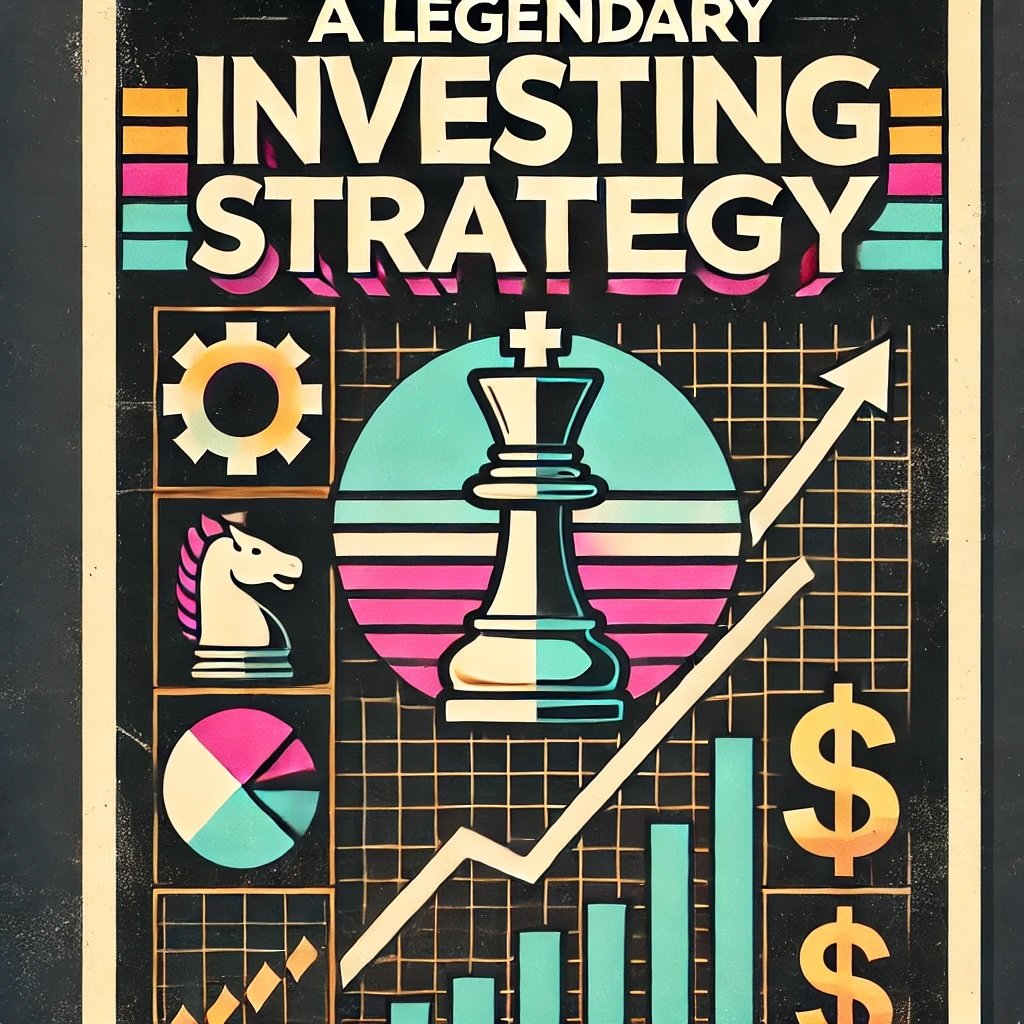Micro cap investing is an exciting and dynamic strategy that involves seeking out the hidden gems of the stock market – the small companies with market capitalizations between $50 million and $300 million. These companies are often overlooked by larger institutional investors, which creates an opportunity for individual investors to potentially profit from their undervaluation.
Investing in micro cap stocks can be more risky than investing in larger companies due to their size and relative lack of liquidity. However, with greater risk comes the potential for greater reward. Micro cap companies have the potential for explosive growth if they can successfully execute their business plans, which can translate into significant returns for investors who get in early.
One of the advantages of micro cap investing is that it allows investors to access a part of the market that is not widely followed by analysts and institutional investors. This can create inefficiencies in pricing and present opportunities for savvy investors to find undervalued stocks.
Of course, there are also potential drawbacks to micro cap investing. These companies are often young and unproven, which means they may not have a track record of profitability or stability. Additionally, micro cap stocks can be more volatile and subject to wild swings in price than larger, more established companies.
Despite the risks, there are some tips and strategies that investors can use to effectively invest in micro cap stocks. For example, investors can conduct thorough research on potential investments to gain a better understanding of a company’s financials, management team, and growth potential. They can also diversify their portfolio to spread out risk among multiple investments.
Overall, micro cap investing is a thrilling way for individual investors to potentially earn high returns and participate in the growth of small, up-and-coming companies. While it may not be suitable for every investor, those who are willing to take on a little extra risk could potentially reap significant rewards.
What Exactly Is A Micro Cap Company?
Micro-cap companies are typically defined as companies with a market capitalization between $50 million and $300 million. These companies are often overlooked by larger investors, but they can offer significant growth opportunities for those who are willing to take on the added risk.
Micro-cap companies are different from small-cap companies primarily in terms of their market capitalization. Small-cap companies typically have a market capitalization between $300 million and $2 billion. Micro-cap companies are even smaller, with market capitalizations below $300 million. As a result, micro-cap companies are typically younger, less established, and have less liquidity than small-cap companies.
Because of their small size, micro-cap companies are often subject to greater volatility and higher levels of risk than larger companies. However, they also have the potential for greater returns, as they are often undervalued by the market. In addition, micro-cap companies may be able to grow faster than larger companies, as they are able to more easily enter niche markets or take advantage of emerging trends.
Pros Of Micro Cap Investing
Micro cap investing, while risky, offers several potential benefits that investors should consider. Here are the top 10 benefits of micro cap investing:
- Higher potential returns: Micro cap stocks have the potential to generate higher returns compared to larger-cap stocks. Due to their smaller size, micro cap companies are often underrepresented in the market, and as a result, they have a higher potential for growth.
- Diversification: Investing in micro caps can help diversify an investor’s portfolio, which can help reduce risk. Micro caps often operate in niche markets and industries that are not well-represented in larger-cap stocks, allowing investors to diversify their holdings and reduce their exposure to any one particular market or sector.
- Undervalued opportunities: Due to their size, micro cap companies are often overlooked by institutional investors and analysts. This can create opportunities for investors to find undervalued stocks that have the potential for growth, but are currently undervalued by the market.
- Market inefficiencies: The micro cap market is less efficient than the large-cap market, which can create opportunities for investors to profit from mispricings in the market. This is particularly true for investors who are willing to do their own research and are able to identify undervalued opportunities in the market.
- Limited institutional ownership: Micro cap stocks are often not held by institutional investors, which means that they are not subject to the same level of market manipulation or price volatility as larger-cap stocks. This can create a more stable investment environment for investors.
- Innovative ideas: Micro cap companies are often innovators in their fields and are working on cutting-edge technologies and products. Investing in these companies can give investors exposure to new and innovative ideas that have the potential to disrupt existing markets and industries.
- Growth potential: Micro cap companies often have a higher growth potential compared to larger-cap stocks. This is because they are often in the early stages of their business lifecycle and have the potential to grow rapidly as they expand their operations and capture new markets.
- High insider ownership: Micro cap companies often have a higher percentage of insider ownership compared to larger-cap stocks. This means that management has a larger stake in the company’s success, which can align their interests with those of shareholders and create a more shareholder-friendly culture.
- Less analyst coverage: Due to their size, micro cap companies are often overlooked by Wall Street analysts. This means that there is less analyst coverage of these stocks, which can create opportunities for investors who are willing to do their own research and uncover hidden gems in the market.
- Long-term investment potential: Investing in micro cap companies can be a long-term investment strategy, as these companies often take time to grow and achieve their potential. This means that investors who are patient and willing to hold onto their investments for several years can potentially reap significant rewards in the long run.
Micro cap investing offers several potential benefits for investors who are willing to do their own research and take on the added risk of investing in smaller, less-established companies. While not suitable for all investors, those who are able to identify undervalued opportunities in the market and invest in innovative, high-growth companies can potentially achieve significant long-term returns.
source: MicroCapClub on YouTube

Cons Of Micro Cap Investing
Investing in micro cap stocks can offer potentially high returns, but it also carries a number of risks and disadvantages. Here are ten cons of micro cap investing:
- High Risk: One of the main drawbacks of micro cap investing is the high level of risk involved. These companies often have limited resources, small market caps, and are in early stages of development. Therefore, they are more prone to financial distress, poor management, and limited liquidity.
- Volatility: Micro cap stocks are more volatile than large-cap or even mid-cap stocks. They are more susceptible to sudden price movements and can be affected by market fluctuations or news that can create a lot of market noise.
- Limited Information: Micro cap companies are not widely covered by analysts, so it can be difficult to get reliable information about their financial health, management teams, and growth prospects. This limited information can create significant uncertainty and make it challenging to make informed investment decisions.
- Limited Liquidity: Micro cap companies have fewer shares outstanding, which makes them less liquid than larger companies. This means that investors may have difficulty buying or selling shares at a reasonable price, especially during market turbulence.
- Lack of Diversity: Micro cap companies tend to be concentrated in a few sectors, which can limit the diversification of an investor’s portfolio. Investing in micro cap stocks means accepting a higher concentration risk, as a small number of stocks can account for a significant portion of an investor’s portfolio.
- Thin Trading Volumes: Thin trading volumes can create issues for investors who want to buy or sell their shares. This can lead to a situation where a seller cannot find a buyer or vice versa. Moreover, low trading volumes can also lead to wide bid-ask spreads, which can result in significant trading costs for investors.
- Susceptibility to Fraud: Micro cap companies have been associated with fraudulent activities such as pump-and-dump schemes, where insiders artificially inflate the stock price, sell their shares at a profit, and leave retail investors holding the bag.
- Illiquidity Premium: The market may price in an “illiquidity premium” for micro cap stocks, meaning that investors may need to pay more to buy these stocks than their true value. Similarly, investors may receive less than the fair value of their shares when they sell them.
- Difficulty in Exiting Positions: Exiting a micro cap investment can be challenging because of the lack of liquidity and limited trading volumes. Selling a large position can take time, and doing so can result in significant price impacts.
- Regulatory Risk: Micro cap companies are more susceptible to regulatory risks, which can significantly impact their stock prices. These risks include changes in regulations, new taxes, or legal actions against the company. In addition, the regulatory environment for micro cap companies can be challenging due to their size, limited resources, and less-developed governance structures.
source: The Investing for Beginners Podcast on YouTube

Tips On How To Become A Great Micro Cap Investor
Micro cap investing can be a challenging and rewarding endeavor for those willing to put in the time and effort to develop the necessary skills. While it’s true that investing in micro cap companies can carry higher risks than investing in larger, more established companies, it can also offer the potential for higher rewards.
To be a great micro cap investor, it takes a combination of skills and traits that include:
- Research: In-depth research is essential for identifying micro cap companies that have the potential to grow and thrive. This involves examining financial statements, industry trends, management teams, and other important factors that can impact the company’s future success.
- Patience: Micro cap investing can be a long-term game. Many micro cap companies are still in the early stages of growth and may take several years to realize their full potential. A great micro cap investor must be patient and willing to hold onto their investments for the long haul.
- Discipline: Successful micro cap investors are disciplined in their investment approach. They stick to their investment strategy and avoid getting caught up in short-term market fluctuations or the hype surrounding a particular stock.
- Risk management: Micro cap investing can be risky, so great micro cap investors are skilled at managing risk. They diversify their portfolio and carefully manage their exposure to individual stocks to minimize risk.
- Flexibility: The micro cap market is constantly evolving, and great investors are flexible and adaptable. They are open to new ideas and are willing to pivot their investment strategy if necessary.
- Attention to detail: Investing in micro cap companies requires a keen eye for detail. Great investors pay close attention to the little things that can make a big difference, such as changes in management, regulatory developments, or industry trends.
- Networking: Networking is important in all areas of business, and micro cap investing is no exception. Great micro cap investors build relationships with management teams, industry experts, and other investors to gain insights and stay up-to-date on industry developments.
- Emotional intelligence: Micro cap investing can be an emotional rollercoaster, and great investors have strong emotional intelligence. They are able to stay calm and level-headed in the face of market volatility and make rational decisions based on facts and analysis, rather than emotions.
- Curiosity: Great micro cap investors are naturally curious and have a thirst for knowledge. They are always seeking to learn more about the companies they invest in, the industry trends that are shaping the market, and the strategies of other successful investors.
- Persistence: Last but not least, great micro cap investors are persistent. They don’t give up easily and are willing to put in the hard work and long hours required to succeed in this challenging but potentially rewarding market.
Being a great micro cap investor requires a combination of research, patience, discipline, risk management, flexibility, attention to detail, networking, emotional intelligence, curiosity, and persistence. By developing these skills and traits, investors can increase their chances of success in the micro cap market.
source: TheTechnicalTraders on YouTube

Popular Micro-Cap ETFs and Mutual Funds For Investors To Consider
Here is a list of some micro-cap ETFs and mutual funds that investors can consider:
- Paradigm Micro-cap Fund
- Oberweis Micro Cap Fund
- Wasatch Micro Cap Fund
- DFA U.S. Micro Cap Portfolio
- James Micro Cap Fund
- Ancora MicroCap Fund
- Royce Micro Cap Series Fund
- North Star Micro Cap Fund
- Royce Micro-Cap Trust, Inc.
- Ranger Micro Cap Fund
- RBC Microcap Value Fund
- Driehaus Micro Cap Growth Fund
- iShares Micro-Cap ETF
source: Value Educator on YouTube

Micro Cap Investing Final Thoughts
Micro-cap investing can be an alluring prospect for investors seeking to achieve exceptional returns by investing in small and emerging companies that possess high growth potential. Nevertheless, investing in micro-cap companies can be more perilous than investing in larger and well-established companies. Micro-cap companies tend to be more volatile, and there is a higher likelihood of these companies facing failure.
To reduce the risk, investors should conduct thorough research, diversify their holdings, and maintain a long-term investment horizon. In addition, investing in micro-cap funds can provide investors with access to a diversified portfolio of micro-cap stocks and benefit from the knowledge and management of professional fund managers.
In conclusion, micro-cap investing can be a feasible strategy for investors who are willing to take on more significant risk for the potential of higher returns. Nevertheless, investors should always meticulously evaluate their individual investment objectives and risk tolerance before deciding to invest in micro-cap funds or individual stocks.
Important Information
Comprehensive Investment Disclaimer:
All content provided on this website (including but not limited to portfolio ideas, fund analyses, investment strategies, commentary on market conditions, and discussions regarding leverage) is strictly for educational, informational, and illustrative purposes only. The information does not constitute financial, investment, tax, accounting, or legal advice. Opinions, strategies, and ideas presented herein represent personal perspectives, are based on independent research and publicly available information, and do not necessarily reflect the views or official positions of any third-party organizations, institutions, or affiliates.
Investing in financial markets inherently carries substantial risks, including but not limited to market volatility, economic uncertainties, geopolitical developments, and liquidity risks. You must be fully aware that there is always the potential for partial or total loss of your principal investment. Additionally, the use of leverage or leveraged financial products significantly increases risk exposure by amplifying both potential gains and potential losses, and thus is not appropriate or advisable for all investors. Using leverage may result in losing more than your initial invested capital, incurring margin calls, experiencing substantial interest costs, or suffering severe financial distress.
Past performance indicators, including historical data, backtesting results, and hypothetical scenarios, should never be viewed as guarantees or reliable predictions of future performance. Any examples provided are purely hypothetical and intended only for illustration purposes. Performance benchmarks, such as market indexes mentioned on this site, are theoretical and are not directly investable. While diligent efforts are made to provide accurate and current information, “Picture Perfect Portfolios” does not warrant, represent, or guarantee the accuracy, completeness, or timeliness of any information provided. Errors, inaccuracies, or outdated information may exist.
Users of this website are strongly encouraged to independently verify all information, conduct comprehensive research and due diligence, and engage with qualified financial, investment, tax, or legal professionals before making any investment or financial decisions. The responsibility for making informed investment decisions rests entirely with the individual. “Picture Perfect Portfolios” explicitly disclaims all liability for any direct, indirect, incidental, special, consequential, or other losses or damages incurred, financial or otherwise, arising out of reliance upon, or use of, any content or information presented on this website.
By accessing, reading, and utilizing the content on this website, you expressly acknowledge, understand, accept, and agree to abide by these terms and conditions. Please consult the full and detailed disclaimer available elsewhere on this website for further clarification and additional important disclosures. Read the complete disclaimer here.





